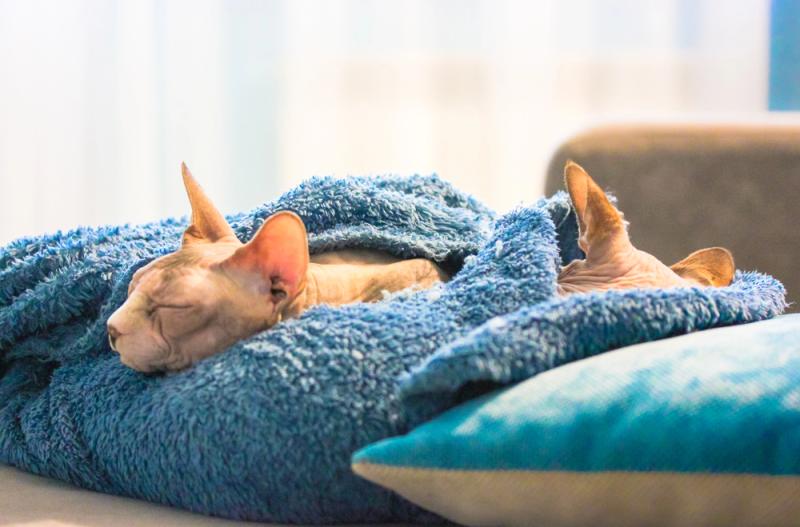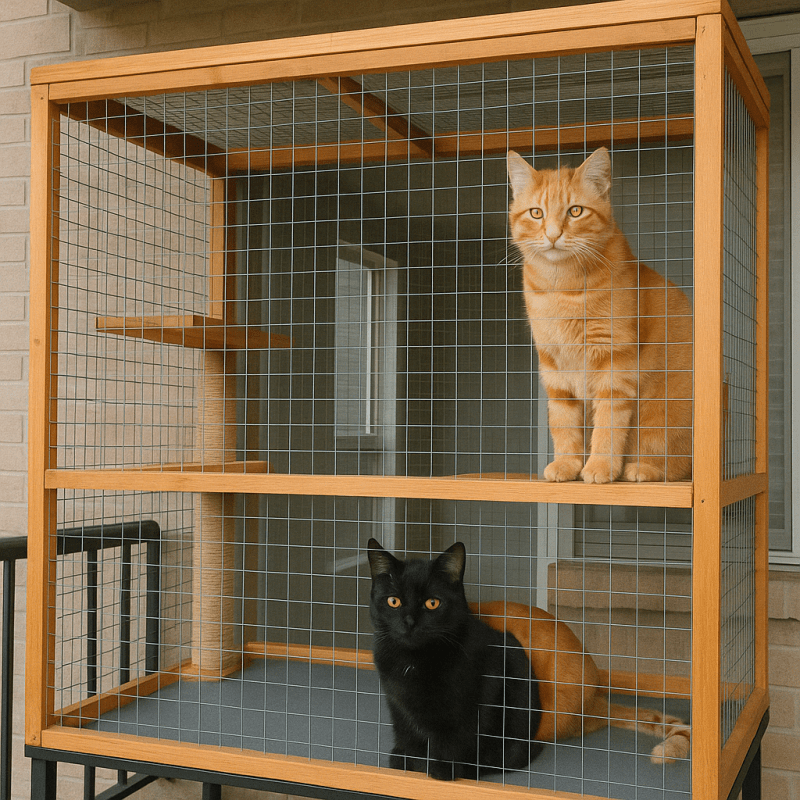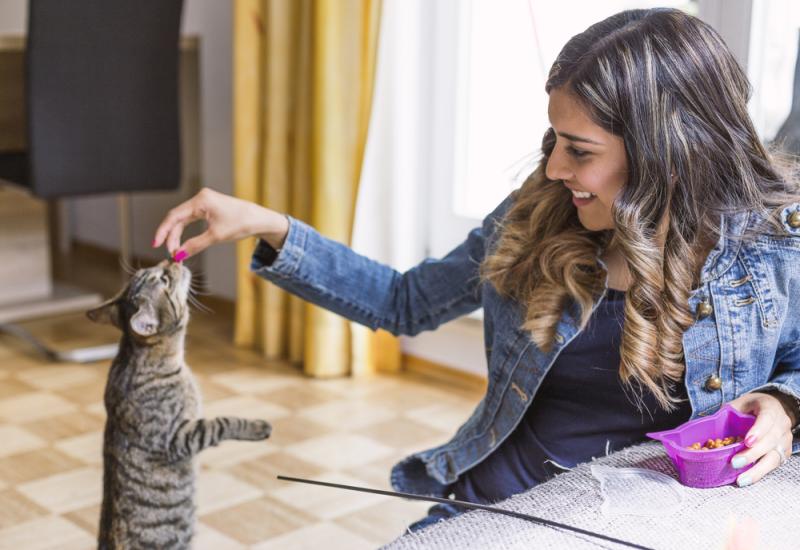Identifying Potential Hazards: A Guide to Ensuring Your Home is Safe for Your Feline Friend
Cat-Proofing Your Home
When it comes to welcoming a new cat into your home, it's essential to create a safe and cat-friendly environment to protect their well-being. Cats are naturally curious creatures, and it's crucial to identify potential hazards that may pose a threat to their safety. In this guide, we will walk you through various aspects of cat-proofing your home, ensuring a secure living space for your feline companion.
1. Evaluate Your Home's Layout
Start by evaluating your home's layout from a cat's perspective. Look for any potential escape routes, such as open windows or balcony doors. Make sure screens are secure and inaccessible, preventing your cat from accidentally falling out. Block any small spaces where cats can get trapped, like gaps behind furniture or appliances.
2. Keep Toxic Plants Out of Reach
Many common houseplants are toxic to cats when ingested. Before bringing a cat home, ensure that all plants within their reach are non-toxic. Some examples of harmful plants include lilies, pothos, and various types of ferns. Replacing toxic plants with safe alternatives will help prevent accidental poisoning.
3. Secure Hazardous Materials
Store cleaning supplies, chemicals, and medications in cabinets or shelves that are inaccessible to your cat. Cats are naturally curious and may investigate open containers, leading to potential poisoning or injuries. Ensuring these materials are securely stored will help eliminate these risks.
4. Beware of Electrical Cords
Cats are notorious for chewing on electrical cords, which poses a significant risk of electrocution. Keep cords out of reach or use cord protectors to deter your feline friend from gnawing on them. Additionally, consider hiding cords behind furniture or using cord organizers to minimize their accessibility.
5. Hide Potentially Harmful Objects
Remove any small objects, such as rubber bands, paperclips, and sewing supplies, that could be easily swallowed by your cat. Ingesting foreign objects can lead to choking or intestinal blockages, requiring immediate veterinary attention. Keep these items out of your cat's reach to avoid such emergencies.
6. Eliminate Access to Open Windows and Balconies
Cats love gazing outside and may be tempted to jump out of open windows or balconies. Install sturdy screens and ensure they are properly secured. Alternatively, you can use window restrictors to limit the opening size or create barriers that prevent your cat from reaching these areas.
7. Be Mindful of Hot Surfaces
Cats are sensitive to heat and can be accidentally burned by hot surfaces like stovetops, radiators, or space heaters. When cooking, be cautious of your cat's proximity and ensure they cannot reach these hot areas. Consider using safety gates or physical barriers to restrict access to potential hazards.
By proactively identifying and addressing potential hazards in your home, you'll be able to provide a safe environment for your feline friend. Keep in mind that every cat is different, and they may have unique behaviors or preferences that require additional safety considerations. Regularly reassess your home to maintain a cat-proof environment as your cat grows and explores their surroundings.
Essential Steps to Secure Your Cat's Environment: Tips and Tricks for Cat-Proofing Your Home
Cats are naturally curious creatures and ensuring that their environment is safe is essential for their well-being. Cat-proofing your home is an important part of responsible pet ownership. Here are some essential steps you can take to secure your cat's environment and provide them with a safe and happy living space.
1. Hide Electrical Cords
Electrical cords can be appealing toys for cats, but they pose a serious risk of electrocution or injury. Make sure to hide or secure all electrical cords using cord covers, tape, or by tucking them away. This will prevent your cat from chewing on or playing with them.
2. Secure Windows and Balconies
Cats love to explore and may attempt to slip out an open window or jump off a balcony. To prevent accidents, install sturdy screens on windows, ensuring they are secure and intact. If you have a balcony, make sure to block any gaps or open areas and consider installing a cat-proof netting or barrier to prevent them from falling.
3. Store Toxic Substances Safely
Many common household items and plants can be toxic or harmful to cats if ingested. Keep cleaning products, medications, insecticides, and other toxic substances securely stored away in cabinets or high shelves that are out of your cat's reach. Similarly, research which plants are toxic to cats and remove them from your indoor or outdoor space.
4. Secure Trash Cans
Cats are known for their curiosity and may attempt to dig into trash cans, seeking out potential food scraps or simply exploring. Store your trash cans in areas where your cat cannot access them, such as inside a cabinet or using lidded cans. This will prevent them from ingesting something harmful or creating a mess.
5. Keep Small Objects Out of Reach
Cats often like to play with small objects that can be choking hazards. Keep small items like rubber bands, paperclips, earrings, or coins safely stored in drawers or containers that are unaccessible to your cat. Regularly scan your home to ensure no small objects have been accidentally left out.
6. Protect Furniture with Scratching Posts
Cats have a natural instinct to scratch, and your furniture may become their target. Invest in sturdy scratching posts or pads and place them strategically around your home. Encourage your cat to use these designated scratching areas by sprinkling them with catnip or playing with interactive toys near them. This will help protect your furniture and satisfy your cat's natural instincts.
7. Remove Any Dangling Hazards
Dangling blind cords, curtain strings, or other similar hazards can pose a serious risk of strangulation if cats become tangled in them. Securely tie up or use cord cleats to keep blind cords out of reach. For curtains, consider installing breakaway hooks that will release the curtain if your cat gets caught.
By following these essential steps, you can create a safe and cat-friendly environment, minimizing the risks and hazards that your feline friend may encounter in your home. Remember, a secure and well-maintained environment will not only keep your cat safe but also enhance their overall happiness and quality of life.
Creating a Cat-Friendly Living Space: Transforming Your Home into a Safe and Stimulating Environment for Your Furry Friend
Welcoming a new cat into your home is an exciting experience. Just like humans, cats need a safe and stimulating living environment to thrive. By cat-proofing your home and making a few key changes, you can create a cat-friendly space that is both safe and enjoyable for your furry friend.
1. Create Vertical Spaces
Cats are natural climbers and love to perch on high spots, so providing them with vertical spaces is essential. Install cat trees, wall shelves, or window perches to give your cat opportunities to climb, explore, and observe their surroundings from a higher vantage point. This not only enriches their environment but also promotes exercise and mental stimulation.
2. Offer Scratching Options
Scratching is a natural behavior for cats and helps them keep their claws healthy and strong. Instead of allowing your cat to use your furniture or carpets as a scratching post, offer them cat-friendly alternatives. Invest in a sturdy scratching post or board, preferably made of sisal or corrugated cardboard, and place it in a central location where your cat spends most of its time. Encourage and reward your cat for using the designated scratching area to redirect their behavior.
3. Provide Hideaways
Cats often seek out enclosed spaces where they can retreat and feel safe. Provide your cat with cozy hideaways such as cat tents, boxes, or even dedicated cat beds in quiet areas of your home. These spaces will give your cat a sense of security and privacy, especially if you have multiple pets or a busy household.
4. Keep Toxic Plants Out of Reach
While plants can add beauty and a touch of nature to your home, some can be toxic to cats. Before bringing any plants into your living space, make sure they are non-toxic and safe for feline companions. Remove or place toxic plants out of reach, as ingestion can lead to severe health issues or even be fatal for your cat.
5. Secure Dangerous Areas
Identify and secure any potentially hazardous areas in your home to keep your cat safe. This includes blocking off access to balconies, open windows, or any high surfaces your cat can reach. Additionally, ensure that all toxic substances, such as cleaning supplies, medications, or any small objects that could be swallowed, are stored securely out of your cat's reach to prevent accidental poisoning.
6. Offer Interactive Toys and Playtime
Cats have a natural prey-drive and need mental and physical stimulation to stay healthy and contented. Provide interactive toys, such as puzzle feeders or toys with hidden treats, to engage your cat's hunting instincts. Additionally, set aside regular playtime sessions to actively engage with your cat using wand toys or laser pointers. This not only strengthens your bond but also keeps your cat stimulated and reduces boredom-induced destructive behaviors.
Creating a cat-friendly living space will not only make your furry friend happy but also provide you with peace of mind knowing they are safe and content. By incorporating these changes into your home, you can ensure a harmonious and enjoyable coexistence with your feline companion.



